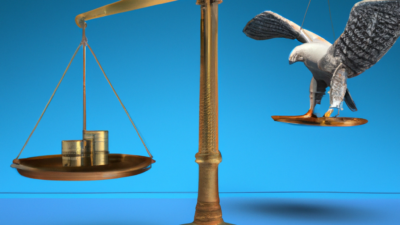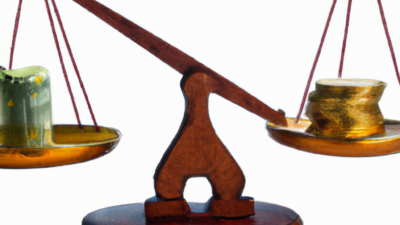**Decoding Fiscal Policy: The Unsung Architect of Economic Stability**
In the intricate tapestry of a nation's economy, fiscal policy often plays the role of an unsung architect, crafting blueprints that shape the financial landscape. While monetary policy and market forces frequently grab the headlines, it is fiscal policy that quietly but profoundly influences economic growth, employment rates, and overall financial stability. Defined by government decisions on taxation and public spending, fiscal policy serves as a powerful tool to steer the economy through turbulent waters and towards sustainable prosperity.
This article delves into the multifaceted world of fiscal policy, unraveling its mechanisms, objectives, and impact on everyday life. From the corridors of government agencies to the pockets of ordinary citizens, we explore how fiscal decisions mold economic realities and chart the course for future development. Join us as we decode the complexities of fiscal policy and uncover its pivotal role in shaping the economic destiny of nations.
Sure, here is a suggested content outline for an article covering the topic of "Fiscal Policy":
Fiscal policy refers to the use of government spending and taxation to influence a country's economy. It is one of the main tools used by governments to achieve macroeconomic objectives such as controlling inflation, managing employment levels, and fostering economic growth. Fiscal policy is typically implemented through changes in government budgets and is managed by the legislative and executive branches of government.
### Key Components of Fiscal Policy
1. **Government Spending**: This includes expenditures on goods and services, infrastructure projects, education, healthcare, and social welfare programs. Increased government spending can stimulate economic activity by creating jobs and increasing demand for goods and services.
2. **Taxation**: Taxes are the primary source of revenue for governments. By adjusting tax rates and tax policies, governments can influence the level of disposable income available to consumers and businesses. Lower taxes can increase disposable income, leading to higher consumption and investment, while higher taxes can be used to cool down an overheating economy.
### Types of Fiscal Policy
1. **Expansionary Fiscal Policy**: This involves increasing government spending or decreasing taxes to stimulate economic growth. It is typically used during periods of recession or economic downturn to boost demand and reduce unemployment.
2. **Contractionary Fiscal Policy**: This involves decreasing government spending or increasing taxes to slow down economic growth. It is often used when an economy is overheating, and there are concerns about inflation.
### Objectives of Fiscal Policy
1. **Economic Growth**: By managing spending and taxation, governments aim to create a stable environment that fosters sustainable economic growth.
2. **Full Employment**: Fiscal policies can be designed to reduce unemployment by creating jobs through public projects and incentives for businesses to hire more workers.
3. **Price Stability**: Controlling inflation is another key objective. Appropriate fiscal measures can help stabilize prices by managing the level of demand in the economy.
4. **Equitable Distribution of Income**: Through progressive taxation and targeted spending programs, fiscal policy can help reduce income inequality and provide support to disadvantaged groups.
### Implementation and Challenges
The implementation of fiscal policy involves several steps, including the formulation of a budget, legislative approval, and execution of the approved budget. One of the significant challenges is the time lag between the recognition of an economic issue and the actual implementation of fiscal measures. Additionally, political considerations often play a role in budgetary decisions, which can sometimes lead to suboptimal economic outcomes.
### Fiscal Policy in Practice
Examples of fiscal policy in action include the stimulus packages implemented by various governments in response to the 2008 global financial crisis and the COVID-19 pandemic. These measures typically involved significant increases in government spending and tax relief to support businesses and individuals affected by the economic downturns.
### Conclusion
Fiscal policy is a critical tool for managing a country's economy. By carefully balancing government spending and taxation, policymakers can influence economic activity, aiming to achieve growth, full employment, and price stability while promoting an equitable distribution of income. However, the effectiveness of fiscal policy depends on timely implementation and the ability to navigate political and economic complexities.













